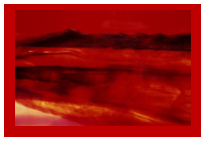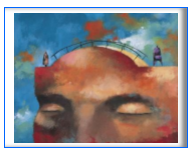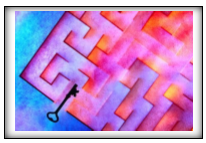(c) Copyright dianne lancaster
A Model For Healing Emotional Dysfunction
And Reclaiming Emotional Health and Wellness
Anger: An emotion with a purpose
 The purpose of anger is to produce change, and the hidden message behind anger is, “I need to feel more love.” The principal change anger produces is therefore in relation to love: Anger challenges love to expand. Love is the emotional response when our needs are met, and anger is the emotional response when our needs are not met. As a proportional emotion, anger is meted out in the quality and quantity of energy necessary to create the change we need. A raised tone of voice may be sufficient for a minor incident. A more strident response may be necessary when we are being accused or abused.
The purpose of anger is to produce change, and the hidden message behind anger is, “I need to feel more love.” The principal change anger produces is therefore in relation to love: Anger challenges love to expand. Love is the emotional response when our needs are met, and anger is the emotional response when our needs are not met. As a proportional emotion, anger is meted out in the quality and quantity of energy necessary to create the change we need. A raised tone of voice may be sufficient for a minor incident. A more strident response may be necessary when we are being accused or abused.
Among the four basic emotions – love, anger, fear, and sadness – each has a purpose. The purpose of love is to create and sustain life. It is, therefore, the enduring emotion. Each of the other emotions has a purpose, however, and once they engage and serve their purpose, they subside and are replaced by love.
In an ideal world, that is. In reality, emotions are often withheld instead of being expressed – and that is the beginning of emotional dysfunction.
In the instance of anger, its purposefully disruptive energies are designed to interact with a situation that does not meet our needs and, ideally, create some kind of change so that the situation then does meet our needs. Once the anger has been engaged to serve that purpose, it subsides and the love returns.
The same is true for fear. The purpose of fear is to engage when our life is in danger. Its adrenaline races through our mind and body with swift actions or calculations. And when our safety resumes, the fear subsides and our emotional equilibrium returns. If fear engages not because our life is in danger but because our security seems threatened, that fear subsides when we develop a strategy for reducing the threat; or when the irrational thoughts that fear can produce subside; or when the reality that there is no threat prevails.
Even sadness has a purpose. It is our response to the lack or loss of love, and it, too, is designed to be a non-enduring emotion. It is an appropriate response when, for example, a neighbor moves away or a relationship comes to an end or a loved one passes. But once the sadness has been experienced and released, love returns and life goes on.
Rage: A Condition Lacking Emotional Conscience
The Emotion Modification model considers rage to be not an emotion, but a condition: a state of emotional shutdown so severe that it is devoid of love, proportionality or conscience. To reach that extreme requires a long-term buildup of anger so serially suppressed – so manipulated and denied – that it automatically engages in an uncontrolled, uncontrollable manner.
 Rage is, therefore, the extreme outcome of the extreme experience of UnLove. That term as it is used in the Transforming Anger Into Love™ model allows for the fact that a child, for example, may be in a loving environment, but that does not mean the child is experiencing love. Rage is the indication of the degree to which a person has needed to feel love, has not felt love, and feels powerless in terms of feeling adequate love… even as a child.
Rage is, therefore, the extreme outcome of the extreme experience of UnLove. That term as it is used in the Transforming Anger Into Love™ model allows for the fact that a child, for example, may be in a loving environment, but that does not mean the child is experiencing love. Rage is the indication of the degree to which a person has needed to feel love, has not felt love, and feels powerless in terms of feeling adequate love… even as a child.
In addition, because sadness is the response to the lack or loss of love – and rage is the indicator of the extreme experience of UnLove – the relationship between rage and sadness is key to the principles of Transforming Anger Into Love™. Anger is the emotion that manages anger, but sadness is the key to reversing rage.
The Anger/UnLove Axis
Transforming Anger Into Love™ teaches principles for dismantling the anger-based patterns and replacing them with healthier, more loving emotional options. Its basic premise is that the patterns were developed in childhood when the person was not experiencing adequate love. The child undoubtedly used anger in an effort to communicate, “I need to feel more love,” but for the anger to have been suppressed means the child at some point determined that it was not safe or advisable to continue expressing the anger… so the suppressive patterns developed. The anger would arise as the emotional response to unmet needs for love, but instead of being expressed and allowing room for love to return, the anger accumulated to a degree that displaced the love.
The patterns of suppressing anger that were critical to the child’s early-life survival eventually became problematic in the adult’s emotional development, producing, among other things, arrested emotional development – including unmatured, unintegrated emotions and emotional responses – in turn causing the person to be attracted to and attractive to similar emotional patterns in others… which would be inadequate to meet the person’s emotional needs.
Because the need for love would have continued to become greater, the emotional dysfunction would also have gotten greater. Whereas love is the emotional response when needs are met, the person who has not experienced adequate love does not know how to inventory a relationship or a job or a purchase to ensure it has the capacity to meet the person’s needs. As a result, few relationships are sustainable, and the fear of continuing to live without love gains momentum. In addition, the perpetual experience of living without adequate love leads to dysfunction in other areas, trying either to feel love or to avoid the feelings of UnLove. Those dysfunctions can include excesses (talking, spending, eating, drinking, drugs, gambling, sex), and develop into depression, seduction, manipulation, abandonment, and angry/co-dependent dynamics in relationships.
Emotion Modification: A New Model Based On
Applied Principles of Transforming Anger Into Love™
 The Emotion Modification model was developed to complement a multi-disciplinary residential treatment and training center, and also to create a new para-profession credentialed in anger management and anger resolution. As that treatment and education center has been envisioned, each staff member (such as administrative assistants and aides) will have experienced a 33-hour intensive training module based on the principles of Transforming Anger Into Love™, certifying and qualifying that person as an Anger Management Specialist.
The Emotion Modification model was developed to complement a multi-disciplinary residential treatment and training center, and also to create a new para-profession credentialed in anger management and anger resolution. As that treatment and education center has been envisioned, each staff member (such as administrative assistants and aides) will have experienced a 33-hour intensive training module based on the principles of Transforming Anger Into Love™, certifying and qualifying that person as an Anger Management Specialist.
Each professional (such as nurse practitioner, psychologist, naturopath, LCSW, homeopath, acupuncturist, nutritionist, M.D., physical health trainer) at the center will have experienced a 66hour intensive training module based on the principles of Transforming Anger Into Love™, certifying and qualifying that person as an Anger Reduction Specialist.
For persons seeking para-professional credentialing, in addition to the 66 hours of training described above, the center will offer a 33-hour intensive Rage Reversal training module component of the principles of Transforming Anger Into Love™, certifying and qualifying that person as an Anger Resolution Specialist.
The Value and Purpose of Each Specialist Category
Anger Management Specialist: Based on the Emotional Modification model, anger does not need to be managed: it needs to be expressed in a loving, proportional, appropriate manner. Since the purpose of anger is to create change, this level of the training emphasizes a model of emotional courage and emotional integrity: saying the truth about what you feel and what you need, and developing skills and tools for making choices and taking actions that produce more love.
Anger Reduction Specialist: The second level of the Emotion Modification model teaches the fundamentals of developing self-love. A person who experiences love can express love. A person who has love inside will use love as an emotional option before resorting to anger. A person who has love inside will use love as an emotional response to others’ anger. A person who has love inside will be less likely to attract anger. A person who has love inside will value the inner strength and quality of emotional integrity and will want to avoid any action that diminishes it. By creating this level of emotional competency, Anger Reduction is the level of Emotion Modification that addresses guilt, depression, judgment, blame, withdrawal, anxiety, denial, and shame.
Anger Resolution Specialist: With the foregoing emotional competency in place, the third level of the Emotion Modification model is able to teach the fundamentals of Rage Reversal. Based on the premise that the function of rage is to keep the cumulative sadness from being felt, this level works with the Rage/Sadness Axis. Mindful that suppressed emotions constitute a large portion of a person’s emotional repertoire, and that another large portion of the person’s emotional repertoire must be used to keep the suppressed emotions suppressed, this level of competency helps dismantle the automatic suppressive patterns so that the emotions covered up by the patterns can be integrated and thereby contribute to the emotional maturity, emotional competency and emotional adequacy of the client.
Summary
 Uncontrolled anger, abuse, violence, and rage are a message about love. They indicate the degree to which a person needs love and feels powerless in terms of ever experiencing adequate love. Transforming Anger Into Love™ is a model for reversing the cumulative emotional dysfunction that originates with suppressing anger and ultimately enabling that anger to accumulate into the uncontrolled, uncontrollable, unloving condition of rage.
Uncontrolled anger, abuse, violence, and rage are a message about love. They indicate the degree to which a person needs love and feels powerless in terms of ever experiencing adequate love. Transforming Anger Into Love™ is a model for reversing the cumulative emotional dysfunction that originates with suppressing anger and ultimately enabling that anger to accumulate into the uncontrolled, uncontrollable, unloving condition of rage.
Love is the emotion that manages anger, and Transforming Anger Into Love™ uses love to help heal the outcomes of anger and rage. While the applied principles of this model embody appropriate, essential boundaries, this model does value the presence and expression of transpersonal love in the practitioner or trainer who is modeling the hope that anger can be transformed and that love can be experienced.
The staff, practitioners and trainers at the envisioned center will be an embodiment of this model and these principles. The contribution this model will make is that it will offer an alternative to the medical model, the scientific model, the pharmaceutical model, and specifically to the Behavior Modification model.
Anger is an emotion. It requires Emotion Modification. That is the most unique and hopeful part of the model described herein. Anger is a more intense emotion than love. Love is more enduring… but anger is more intense. When anger is allowed to accumulate due to manipulation and suppression, its intensity can build up to the degree that it overwhelms the presence of love. That is the end-stage of anger and the beginning of rage. Rage not only overwhelms love; it can even destroy love… starting with self-love.
But because the degree of a person’s anger and rage indicates the degree to which the person needs to feel love and instead feels fury that they cannot find love, when they do experience love, it changes their life. All of their life they have needed love. All of their life they have tried to find love. But with the buildup of anger and rage inside, all of their life they have only attracted more anger, more emotional inadequacy, more dependency… but never love.
They didn’t know how to develop love. If they had known how, they would have done it. So this model teaches the principles and skills to reverse that conditioning. This model knows that the buildup of anger is a crisis related to love, and that the individual has not learned how to find love, how to feel love, and how to live life in a manner that produces an expanding experience of love. This model teaches the individual how to become the quality of person he/she can love. This model knows how to identify unproductive, unloving patterns and replace them with different, more positive emotional options.
This model knows how to teach Transforming Anger Into Love™.